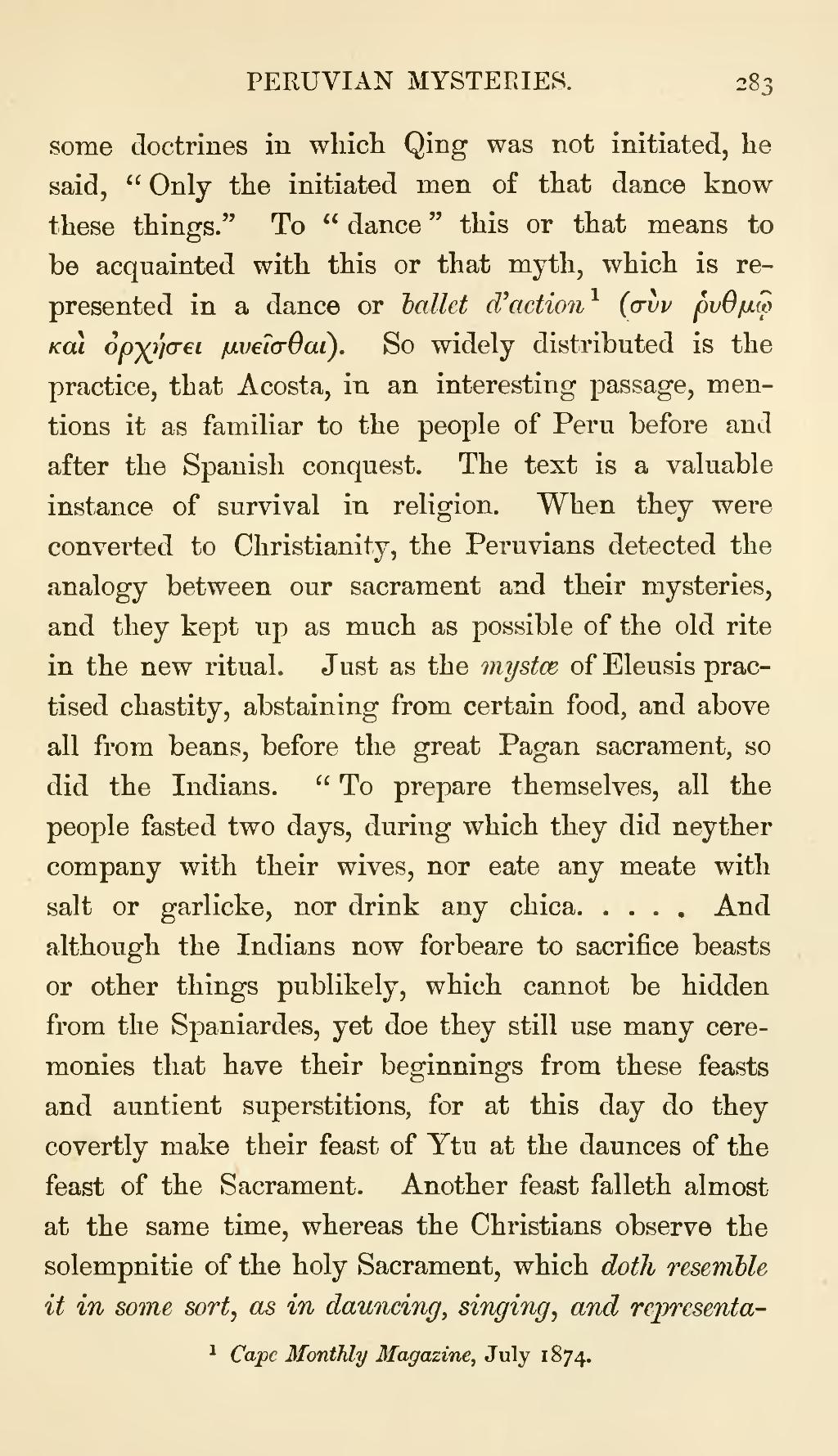some doctrines in which Qing was not initiated, he said, "Only the initiated men of that dance know these things." To "dance" this or that means to be acquainted with this or that myth, which is represented in a dance or ballet d'action[1] (σὺν ῥυθμῷ καὶ ὀρχήσει μυεῖσθαι). So widely distributed is the practice, that Acosta, in an interesting passage, mentions it as familiar to the people of Peru before and after the Spanish conquest. The text is a valuable instance of survival in religion. When they were converted to Christianity, the Peruvians detected the analogy between our sacrament and their mysteries, and they kept up as much as possible of the old rite in the new ritual. Just as the mystæ of Eleusis practised chastity, abstaining from certain food, and above all from beans, before the great Pagan sacrament, so did the Indians. "To prepare themselves, all the people fasted two days, during which they did neyther company with their wives, nor eate any meate with salt or garlicke, nor drink any chica. . . . . And although the Indians now forbeare to sacrifice beasts or other things publikely, which cannot be hidden from the Spaniardes, yet doe they still use many ceremonies that have their beginnings from these feasts and auntient superstitions, for at this day do they covertly make their feast of Ytu at the daunces of the feast of the Sacrament. Another feast falleth almost at the same time, whereas the Christians observe the solempnitie of the holy Sacrament, which doth resemble it in some sort, as in dauncing, singing, and representa-
- ↑ Cape Monthly Magazine, July 1874.
